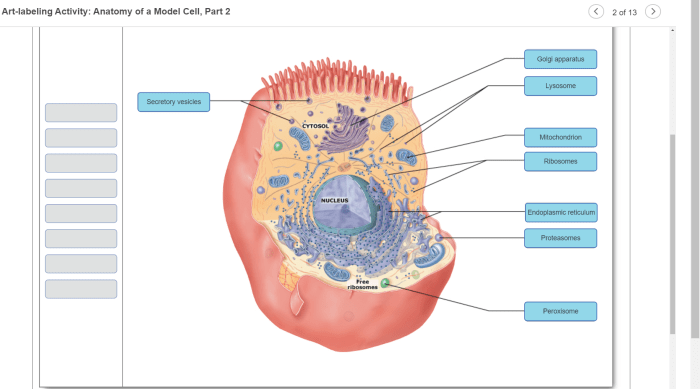Art labeling activity figure 12.11 a 3 of 3 invites us on an artistic journey, unraveling the intricacies of a captivating artwork. This figure, a testament to the artist’s skill and imagination, holds within it a wealth of visual elements, symbolic meanings, and historical context.
Through careful examination and analysis, we will explore the prominent visual elements that compose this figure, deciphering their arrangement and the interplay of color, shape, line, and texture. We will delve into the potential symbolic meanings embedded within the artwork, considering how the composition and arrangement of elements contribute to its interpretation.
Introduction to Art Labeling Activity Figure 12.11 a 3 of 3

Art labeling activities play a crucial role in developing visual literacy and enhancing the appreciation of artistic works. They encourage students to observe, analyze, and interpret visual elements, leading to a deeper understanding of the artwork’s significance and meaning.
Figure 12.11 a 3 of 3 is a specific example used in an art labeling activity. This figure provides an opportunity for students to explore the visual elements, symbolism, and historical context of the artwork.
Key Elements and Features of the Figure
The figure features prominent visual elements arranged in a dynamic composition. The use of color, shape, line, and texture contributes to the overall visual impact and conveys specific meanings.
The vibrant colors create a sense of energy and movement, while the geometric shapes and bold lines add structure and balance to the composition. The texture of the brushstrokes adds depth and a sense of tactility to the artwork.
Symbolism and Interpretation
The figure incorporates symbolic elements that contribute to its meaning. The central figure, for example, may represent a specific mythological character or a broader concept such as power or authority.
The arrangement of the elements within the figure also plays a role in its interpretation. The placement of the central figure in the foreground suggests its importance, while the background elements provide context and support.
Historical and Cultural Context, Art labeling activity figure 12.11 a 3 of 3
The creation of the figure was influenced by historical and cultural factors. It reflects the artistic style and conventions of the time period in which it was produced.
Understanding the artist’s intentions and the broader artistic movement can provide insights into the symbolism and meaning of the figure.
Comparison with Other Figures or Artworks
Comparing the figure with other relevant artworks or artistic styles can enhance its understanding and appreciation.
By identifying similarities and differences, students can gain a broader perspective on the figure’s significance and its place within the artistic landscape.
Educational Applications
The figure can be effectively utilized for educational purposes in the classroom.
A lesson plan or activity could involve guided observation, discussion of visual elements, and exploration of the figure’s symbolism and historical context.
FAQ Corner
What is the purpose of art labeling activity figure 12.11 a 3 of 3?
Art labeling activity figure 12.11 a 3 of 3 is designed to guide students in identifying and understanding the key elements, symbols, and historical context of a specific artwork.
How can I use art labeling activity figure 12.11 a 3 of 3 in the classroom?
Art labeling activity figure 12.11 a 3 of 3 can be used as a teaching tool to facilitate discussions on art appreciation, symbolism, and historical context. It can also be used as a basis for creative writing or research projects.

